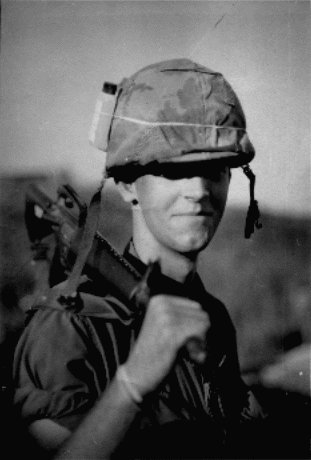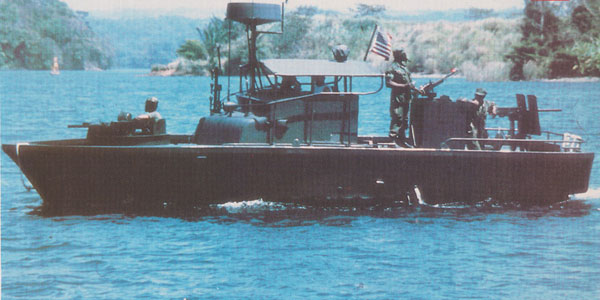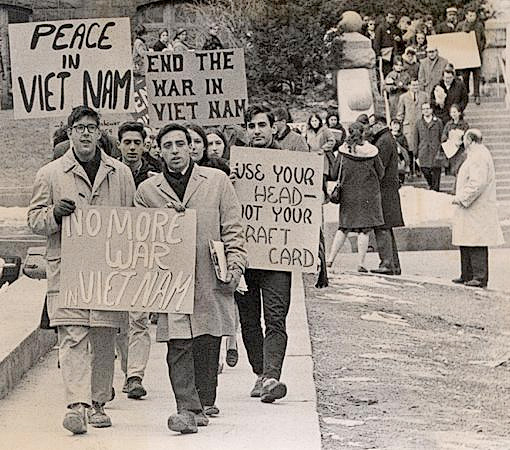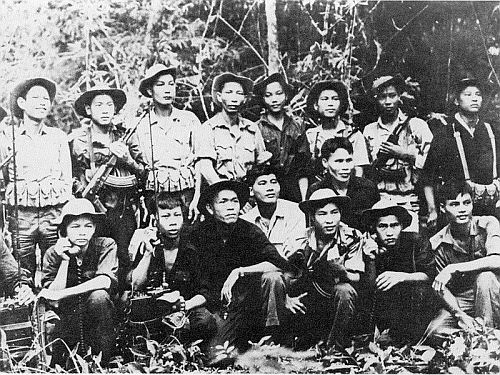
Source: Hasford, Dale Dye, Wikimedia

Source: Hasford, Dale Dye, Wikimedia
Because of the politics of the Cold War, the events of the Vietnam War had both military and political influence.
Complete the following two activities to gain a better understanding of the controversial issues of the war.
Following the US-supported overthrow of South Vietnamese "Democratic" leader Ngo Dinh Diem in 1963, the region suffered great political instability. North Vietnamese (Viet Minh) took advantage of the situation and worked to infiltrate the region with agents, spies, and others working to support the Nationalist movement for reunification under the communist influence.

Source: PBR Mk I, US Navy, Wikimedia
In 1964, The United States Navy sent ships to patrol the waters of the Gulf of Tonkin to prevent the aggression of the Viet Minh into South Vietnam. The following video discusses events that were believed to have taken place on August 2 & 4, 1964.
(1) View the video, (2) answer the question, and (3) complete the table in your notes.
![]()
Gulf of Tonkin: McNamara admits it didn't happen, compelled2283, YouTube
Based on the evidence provided, what action do you think the United States should have taken following this event?
Complete the table to support your answer.
| Facts to Consider (questionable truths) | Questionable Events |

Source: Bruce Crandall's UH-1D, US Army, Wikimedia
The United States government faced public opposition throughout the war, especially as the war intensified and dragged on. In 1965, the United States escalated the war and increased the number of troops sent to Vietnam as it shifted its approach to the war from a defensive position to a more offensive stance. Within 9 months, deployment rose from 3.500 troops to 200,000. In all 3.5 million men served in Vietnam operations between 1964 and 1975. As the war continued with little progress towards victory, people across American began protests against the government, the war, the draft, etc. Look at the photos provided and answer the questions in your notes.
Student protesters marching down Langdon Street at the University of Wisconsin-Madison during the Vietnam War era.

Source: Student Vietnam War protesters, uwdigitalcollections, Wikimedia
Using the information you have read and the notes you have taken in this lesson, answer these questions:
Source: Vietnam War protesters, US Archiv ARCWEB, Wikimedia

If you need help, click on image for a definition of the term "imperialism." This is an image of Vietnam War Protesters in Wichita, Kansas, 1967.
Using the information you have read and the notes you have taken in this lesson, answer these questions:


Source: Nlfmainforce, Brotherreuse, Wikimedia
The Tet Offensive executed by the Viet Minh on January 31, 1968 is called the turning point of the war. (1) View the first 8:21 (8 Minutes 21 seconds) of the video and (2) discuss the strategy used, and in your opinion, the success or failure of the offensive. (3) Answer the questions that follow in your notes to help formulate your response.
Check your answers for the first two questions by clicking on the links. Questions 3-5 require individual thought and analysis, therefore no answers are provided for you.